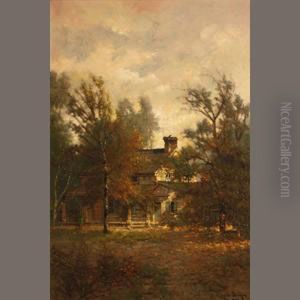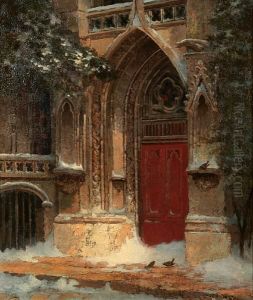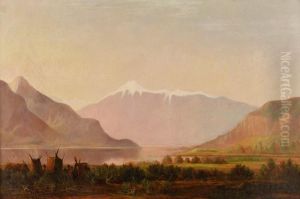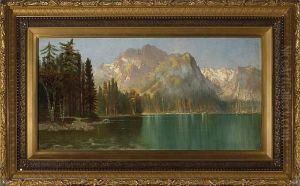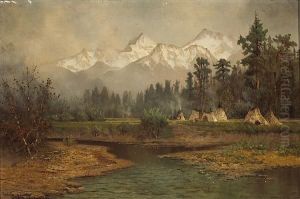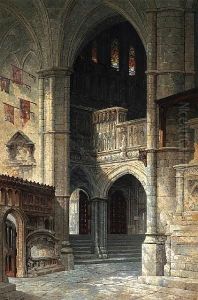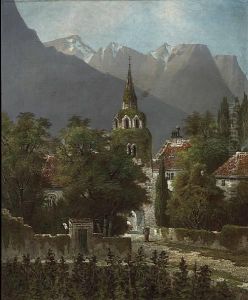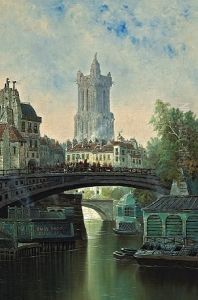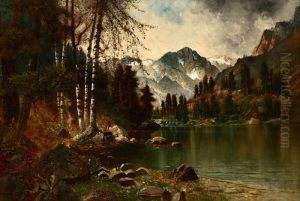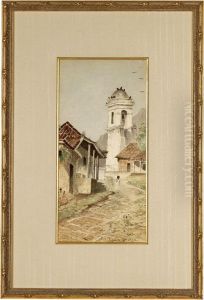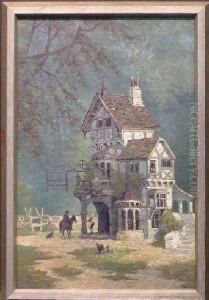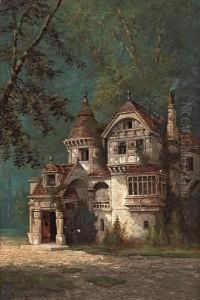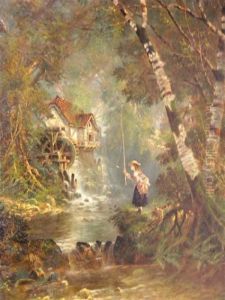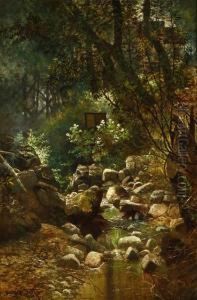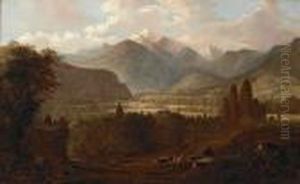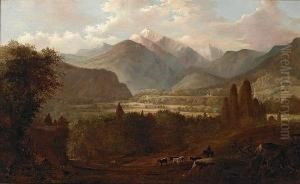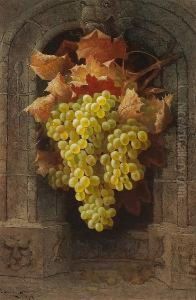Edwin, Edward Deakin Paintings
Edward Deakin was an American painter known for his realistic and detailed landscape, building, and still life paintings. Born on May 21, 1838, in Sheffield, England, Deakin moved to the United States around 1856, settling in Chicago before eventually moving to San Francisco in 1870.
Deakin's work is often associated with the beauty of California's landscape, particularly the state's missions, vineyards, and rural scenes, which he rendered with a high degree of precision and attention to detail. He was also known for his depictions of the Yosemite Valley, which captured the grandeur and serenity of the natural landscape.
In addition to landscapes, Deakin painted a series of 21 missions in 1876, which have been considered important historical records as well as works of art. These paintings documented the California missions as they appeared in the 19th century, serving as valuable visual histories given that many of the missions fell into disrepair and were later restored.
Deakin's style is often characterized as being part of the 19th-century Romantic movement, with a focus on the sublime and picturesque. His works were well-received, and he exhibited at various institutions, including the San Francisco Art Association and the California State Fair.
Despite his success, Deakin's life was not without challenges. He faced financial difficulties at times, and his work was sometimes overlooked in favor of more modern artistic trends that emerged towards the end of his career.
Edward Deakin passed away on May 11, 1923, in Berkeley, California. Today, his paintings are considered significant contributions to the visual art history of California and are held in various museum collections, including the Oakland Museum of California and the Crocker Art Museum in Sacramento.

